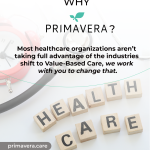A successful healthcare organization tracks patient trends in care, cost and prescriptions, making it possible to deliver quality and improved patient care. Technology has been developed to streamline patient tracking in real-time and allow you to intervene immediately based on the data is critical. The question is – How do you know what patient trends to track? How do these trends impact your healthcare organization?
Transitioning and being successful in Value-Based Care can be a challenge, so let’s look at what patient trends you should consider tracking to overcome that challenge.
Membership
As your healthcare organization continues to grow, tracking membership trends is essential to spotting trends and planning strategic growth. To track important trends, you should ensure to track your patient memberships:
- Monthly, allow you to compare progress
- On different Levels. For example by Payors, Location, Primary Provider, Insurance PCP, Financial Class, County, Chronic Condition and Age Group levels
- View average for each group across the board
- Down to members level, allowing you to spot trends you may not of been aware of
- Membership by Eligibility versus Revenue files from your insurance payor.
Whether your organization is looking to expand or maintain current memberships, having the right tool in place to automate this tracking is key and something to consider.
Care Gaps
Patient care gaps can have a tremendous impact on your patients health and related costs if not intervened promptly. Care gaps may include specific health screenings, tests, unseen new patients and missed annual wellness visits. Depending on your patient population and their needs, typically depends on the care gaps you will want to be able to track. With that being said, you need to have the technology in place that allows you to customize what your care gaps are. The technology you use should also automatically identify care gaps for you, giving you the tools to immediately intervene to resolve gaps before too much cost incurs.
Cost
An essential part of value-based care is to keep the cost of your patient population down. Tracking specific cost drivers and trends can allow your organization to intervene when necessary. Cost drivers include but are not limited to:
- High utilizers
- Patients with frequent hospital/er visits
- Prescriptions
- High risk patients
- Chronic conditions
All of these contribute to a high cost patient that should be closely monitored and have a related case plan to reduce cost. Depending on the number of patients you are serving, identifying the high cost patients and intervening can be seen as a challenge and a timely process. That is why Primavera offers the right tools through our Analytic technology to streamline and rid of the manual process for you.
Patient Prescriptions
A continuous concern through healthcare is the rising cost of prescriptions. When an organization is in value-based care, this concern is no different. You need to have the ability to track the top prescriptions being prescribed, their associated costs and whether they are brand name or generic. Tracking these trends will allow you to identify room for improvement including the opportunity to switch current brand name prescriptions to generic.
Technology to Streamline Your Tracking
Our software solutions enable you to improve the quality of care and enhance the patient trend tracking while helping you take control of your financial future. Whether your healthcare organization is looking to track membership, care gaps, cost or prescription trends – Primavera’s technology has the tools to automate the process for you.
At Primavera, our goal is to remove the challenge of transitioning to value-based care and help your continuous success in value-based care as well.
Reach out to us today to learn how we support you to continually improve your patient tracking and value-based care strategy today.
(888) 667-2219







Recent Comments